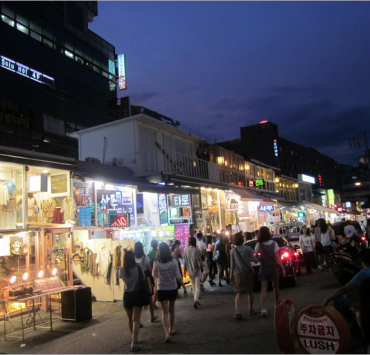Theft of an Amorsolo painting

Whoever was behind the heist on July 3 of the painting of National Artist Fernando Amorsolo called “Mango Harvesters” from the Hofileña Museum in Silay City in Negros Occidental was either an art connoisseur or an art thief.
It was reported that the museum’s CCTV records showed that the painting was taken by at least two thieves who were part of a tour group that had earlier visited the museum.
The stolen masterpiece was one of several paintings by noted Filipino painters that were on display. It was the first time that a painting was stolen from the museum since it was opened in 1962.
The Silay City government had offered a P25,000 cash reward for information that would lead to the arrest of the suspects and recovery of the painting.
According to the museum administrator, Rene Hofileña, the thieves seemed to be professionals and must have observed the museum’s operations for some time because they knew exactly what to get and when there was only one tour guide at work.
The art piece has the same theme as Amorsolo’s painting “Mango Gatherers” which fetched P46.72 million at an auction sale in 2018 by the Leon Gallery in Makati City.
In the local circles, paintings of famous Filipinos, e.g., Felix Resurreccion Hidalgo, Amorsolo, Vicente Manansala, and Botong Francisco, that grace the walls of venues of social gatherings always attract attention and are conversation starters.
Ultrarich connoisseurs
In fact, some government offices with lots of money to spare are known to actively buy paintings of famous painters so they can be displayed at their corridors or conference rooms.
Stories are rife in the international art scene of masterpieces of famous artists and sculptors being stolen by ultrarich art connoisseurs for their private viewing enjoyment, or in the company of friends whom they trust will not rat on them to the authorities.
They have no qualms about spending millions of dollars or euros and engaging the services of criminal elements to be able to get art pieces whose possession feed their oversized ego or give them bragging rights. They get vicarious pleasure from owning rare or precious objects.
For some thieves, however, the motive is simply to make a fortune. They would agree to return the stolen classics to their owners or to the museum they stole them from in exchange for a huge ransom.
If the negotiations fail and the thieves are not caught, the art works disappear in the bowels of the underworld until another opportunity to profit from them comes up.
In light of the publicity that the Amorsolo painting heist has generated, it is highly doubtful if it would surface in any of the auction platforms in the Philippines or elsewhere in the world.

Precious heirlooms
Considering the strict measures that art curators adopt for art pieces that are brought to them for possible sale, that painting would be a hot potato that none of them would touch with a 10-foot pole.
Those that dare throw caution to the wind in expectation of financial gain from their sale could find themselves being charged as accessory to the crime of theft.
If that happens, they can kiss their business goodbye because the provenance of their auction objects would be subject to close scrutiny.
Given these circumstances, the stolen Amorsolo painting must be under lock and key by the person behind its heist or discreetly displayed in a private room for him or her to look at and admire.
It is unfortunate that the objective of the Hofileñas to share the impressive art collection of their family with the public had resulted in the loss of one of their precious heirlooms.
Stricter security measures
Those who have had the opportunity to visit the Hofileña museum can attest to the immense historical and cultural value of their displays that date back to the 1900s.
Considering the conservative ways of the family, in all probability those paintings have not been insured from theft or loss due to fire and natural calamities.
Besides, it would be very challenging for an actuary to come up with a realistic assessment of the monetary value of those paintings for purposes of insurance coverage.
For all they care, the family could have kept the paintings behind secured doors and restricted their viewing to relatives and close friends. But they did not and they should be commended for that.
No doubt, the unprecedented theft of an Amorsolo painting would compel its owners to implement stricter security measures to prevent a repeat of the incident.
That may mean, among others, limiting visiting hours, employing additional security personnel, or being more selective in displaying precious works of art. Considering the intrinsic value of the masterpiece, the authorities must help in the investigation to find the culprits and recover the painting.
Hopefully, the people behind the theft are caught before they can do damage to it or sell it in the black market.





















